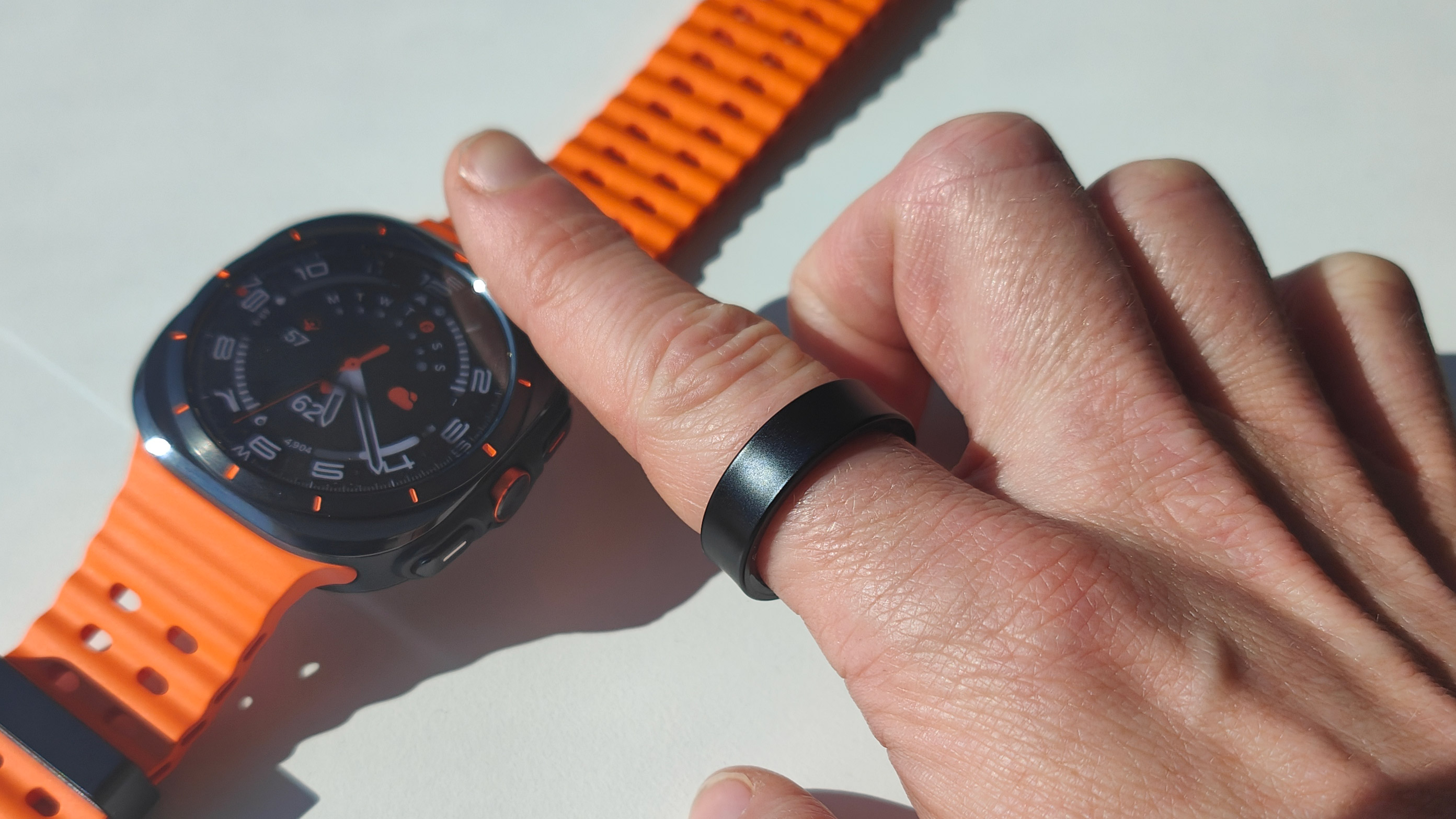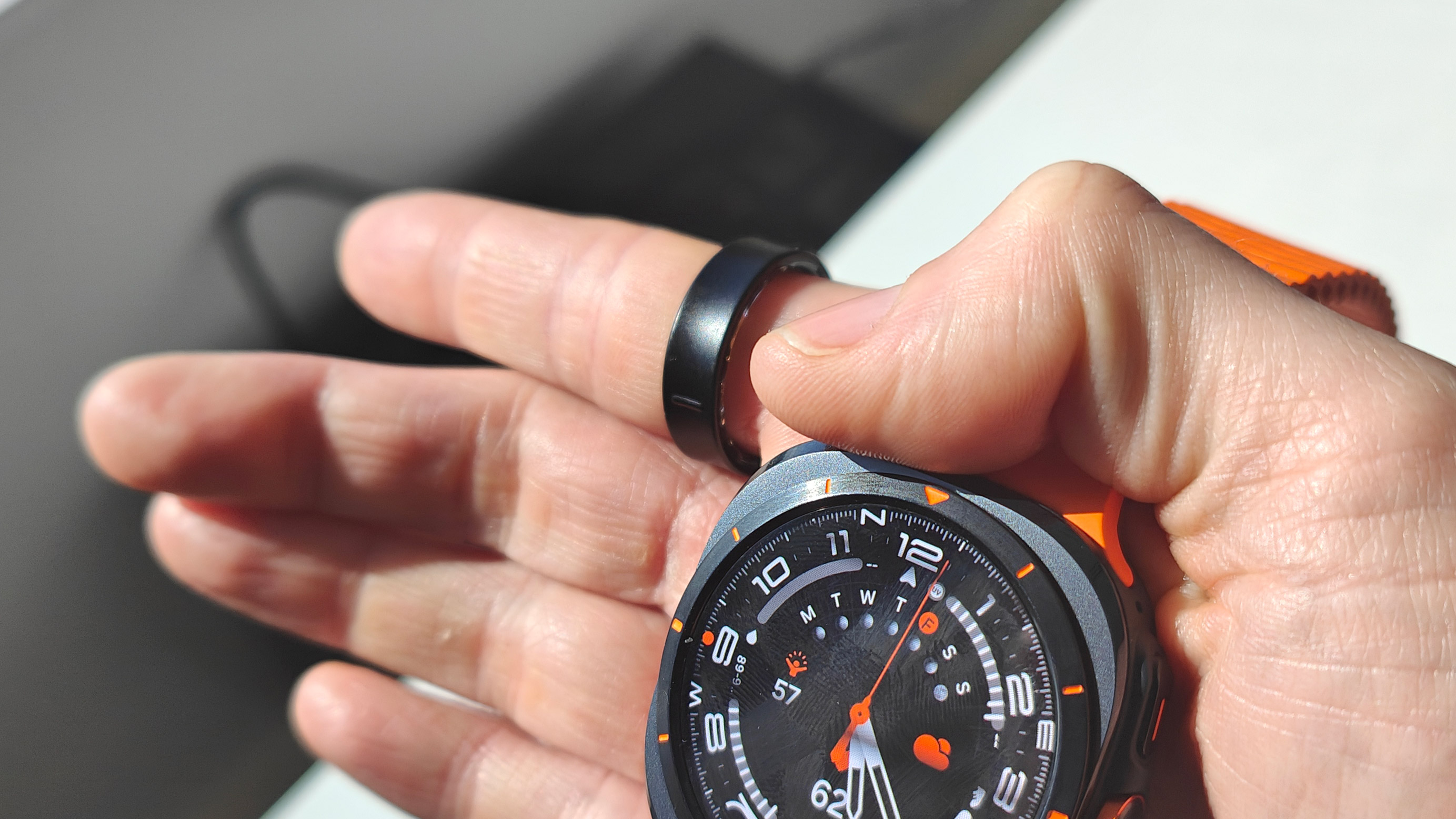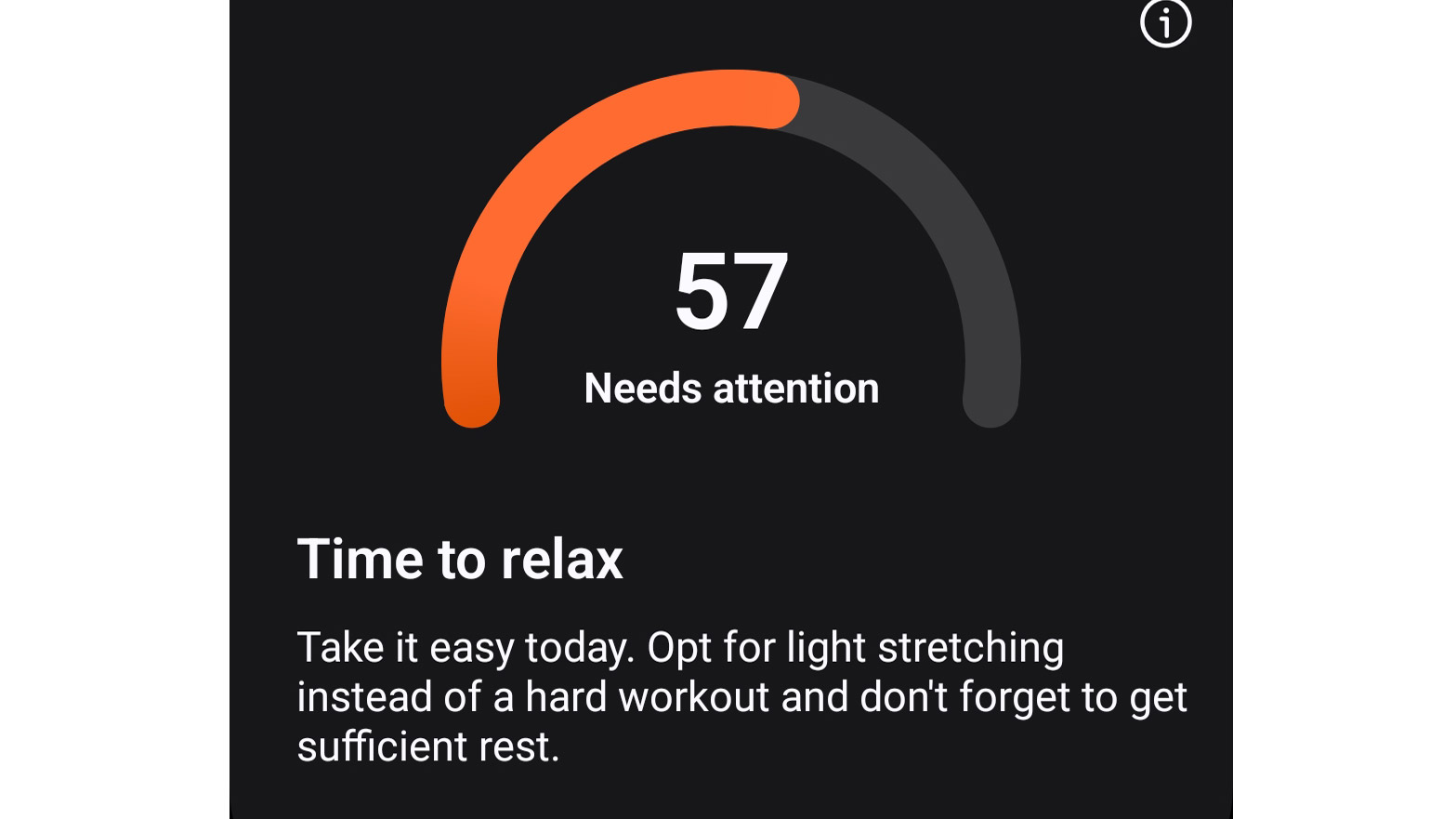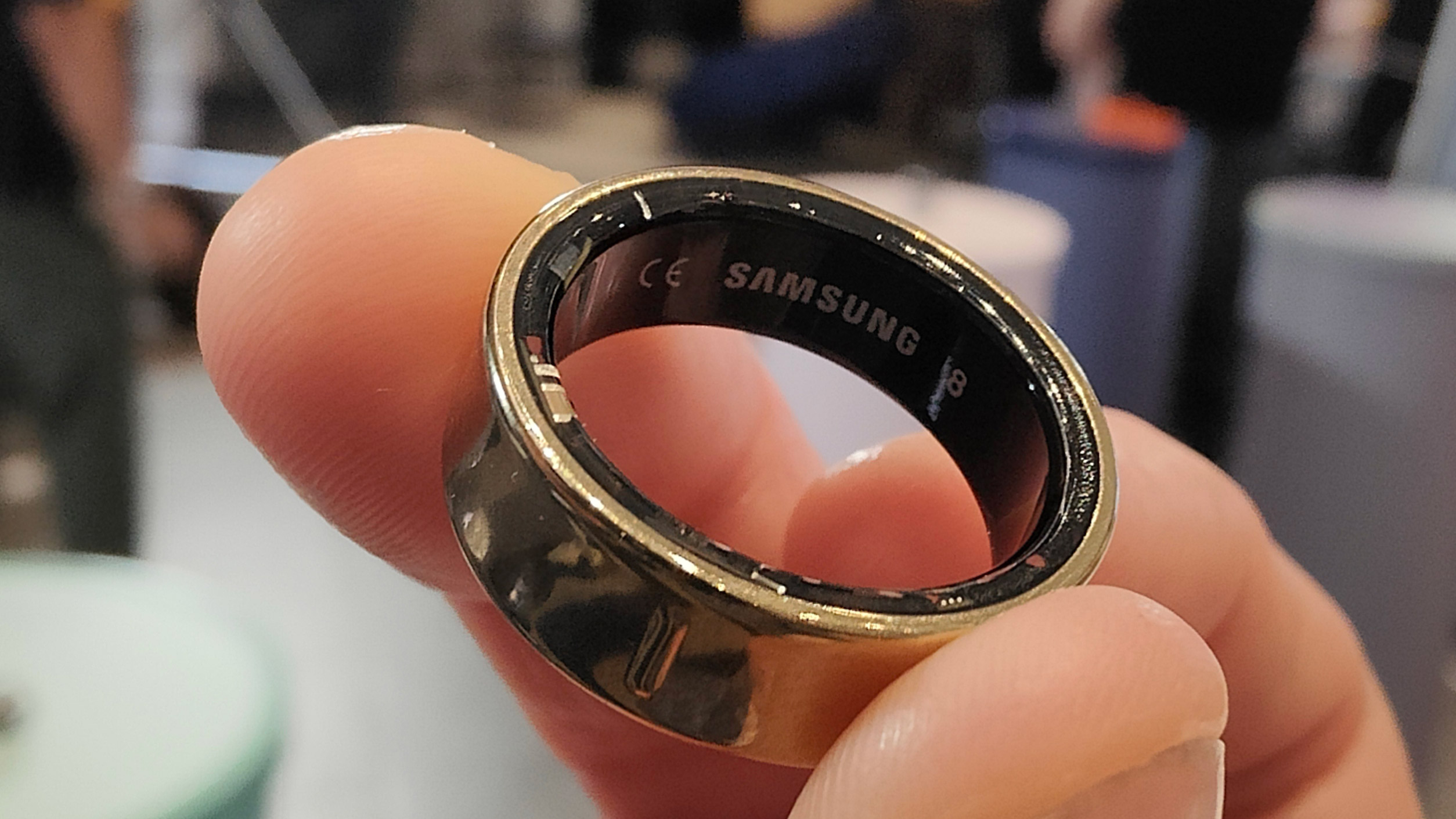I spent 24 hours with the Samsung Galaxy Ring, and it's scarily good so far
I’ve worn the Samsung Galaxy Ring for a day

Since this article was published, we reviewed the Samsung Galaxy Ring in full, testing it over two weeks and giving it an impressive 4.5 stars.
We loved the passive health tracking, automatic workout detection, and were pleasantly surprised by the innovative gesture controls, which allow you to pinch to take a picture with your phone or dismiss an alarm. Its 4.5 stars puts it on at the top of our best smart ring list, even ahead of the Oura Ring 4.
We're awaiting the arrival of a potential Samsung Galaxy Ring 2, perhaps in Samsung's summer Unpacked conference, but as the tracker is geared towards passive health monitoring (with so few ways to interact with the device) it's likely we'll get a software update only, a new Ring model. However, there are no guarantees either way yet.
The rest of this article remains as previously published.
The Samsung Galaxy Ring has been long-anticipated. Samsung is the first major tech company (as in, the really big players) to invest heavily in creating one of the best smart rings, a category previously dominated by start-ups like Oura, Ringconn, and Ultrahuman, and all eyes are on it.
As a wearable category in its infancy, I’m so excited to see where the technology goes. Wearable tech that’s discreet, comfortable, and stylish, rather than yet another screen on my wrist? Count me in.
So, after finally getting my hands on it, I duly charged up its little engagement-ring-style case, popped the Ring on my hand, and, along with the Samsung Galaxy Watch Ultra, paired them both with my phone. For this experiment, I’ll be using my everyday phone (the Oppo Find X5 Pro) with Samsung Health installed rather than a Samsung phone, as I’m keen to see whether there are any blockers when it comes to using a competing device.
So, what’s it like to wear the ring? Is the information useful? Does it look good? Will a wizard show up and ask you to take it to Mordor?* Here’s everything I learned after my first 24 hours with the Samsung Galaxy Ring.
Comfort and style

The best thing about the Galaxy Ring is that it looks good and wears well. There’s no other way to describe it: the sleek Titanium Black sample ring is simply, elegantly designed, and feels more liberating than wearing a watch, especially the beefy Ultra. The freedom to keep the powerful Ultra for GPS workouts and daily wear while taking it off in the evenings and overnight is great.
I feel like for formal events, I could wear a more stylish analog watch with my Ring (you know, with real hands and no apps) and continue tracking my health. No one would be any the wiser that I’m still, secretly, in cyborg mode.
I can also do it the other way around – I like to do several resistance-training workouts a week using weights, bands, and calisthenics. When I don’t want the Ring to scratch on the handle of a dumbbell, I can take it off and leave the Ultra on, so I’m still getting tracking benefits. Of course, I must acknowledge I’m privileged to have and wear both, and most people (other than power users) will likely buy either a Ring or a watch, not both.
Wearing it overnight is incredibly comfortable. This ring is a little narrower than my Oura Ring, and the protective concave design isn’t very prominent at all. I’m usually a size 10, but my sample size was 11 due to limited availability. However, it fits well enough and isn’t loose enough to dislodge or move around without me physically removing the ring, so I’m happy with it for now. Skin contact appears fine, and the Ring had no trouble checking my vitals during waking hours or overnight. After a night’s sleep and a full day of work, the Ring is down to 89% battery life, a decrease of just 11% after 24 hours.
Statistics and information

Each morning, the Ring feeds information about your previous day to Samsung Health, which gives you an Energy Score comprised of the following factors: Sleep time average, Sleep time consistency, Bed/wake time consistency, Sleep timing, Previous day activity, Sleeping heart rate, and Sleeping heart rate variability, or HRV.
The scores marked “consistency” weren’t collected as this was night one, and I only put the Ring on halfway through the day, so it didn’t record my earlier workout. Therefore, I expected my Energy Score to be a bit out of wack with how I felt.
After I slipped on the Ring and the Watch Ultra, around 5pm, I went to a family barbecue, during which I played being a firefighter with my niece and nephew for quite a while, then had some wine before going home to bed.
Looking back on my sleep data after I woke up, I was impressed: the Ring correctly identified when I woke up around 4am, and although my overall Sleep Score registered as 95 (Excellent), my Energy Score was only 57 (Time to Relax). This was due to an elevated average heart rate during sleep (presumably caused by the booze) of 68 bpm, which was above my average resting heart rate of 52 bpm.
It also told me I should have moved more yesterday, which is understandable: it recorded 45 minutes of active playing, pushing the kids around on their ride-on toy cars, but according to Samsung’s Energy Score, I did not complete my required 33 minutes of moderate-to-vigorous structured exercise that day. Well, there’s no way it could know about my 8am workout while I wasn’t actually wearing the thing, but I got to give Galaxy AI props for taking as much as possible into account to generate an accurate Energy Score.
So is it good?

Yes, is the answer. It’s very good. You don’t even necessarily need a Samsung phone at all: just an Android phone with Samsung Health downloaded. I found no barriers or walled-off features in this early testing. There are a few things the Oura Ring app does that are missing here, such as tagging parts of your timeline, but the personalized, AI-powered suggestions and accurate-seeming sleep staging mean the Galaxy Ring is going to do very well, especially considering those insane pre-order sellouts.
A lot of wearable tech enthusiasts, and indeed people who are still fairly clueless about it all, are going to find that they love the idea of a smart ring. The only barrier I can see is the expensive $400 buy-in, but clearly, people are paying it. Watch this space for a full review after a few more days of testing.
*Only if you found it under the Misty Mountains. If you pre-ordered it on the Samsung store, it’s probably fine.
You might also like
- Samsung's plan for your health is big, bold, and AI-powered
- Samsung Galaxy Watches (and the Galaxy Ring) could get an AI-powered heart health upgrade
- Google Search's generative AI is now able to create images...
*Only if you found it under the Misty Mountains. If you pre-ordered it on the Samsung store, it’s probably fine.
Get daily insight, inspiration and deals in your inbox
Sign up for breaking news, reviews, opinion, top tech deals, and more.

Matt is TechRadar's expert on all things fitness, wellness and wearable tech.
A former staffer at Men's Health, he holds a Master's Degree in journalism from Cardiff and has written for brands like Runner's World, Women's Health, Men's Fitness, LiveScience and Fit&Well on everything fitness tech, exercise, nutrition and mental wellbeing.
Matt's a keen runner, ex-kickboxer, not averse to the odd yoga flow, and insists everyone should stretch every morning. When he’s not training or writing about health and fitness, he can be found reading doorstop-thick fantasy books with lots of fictional maps in them.